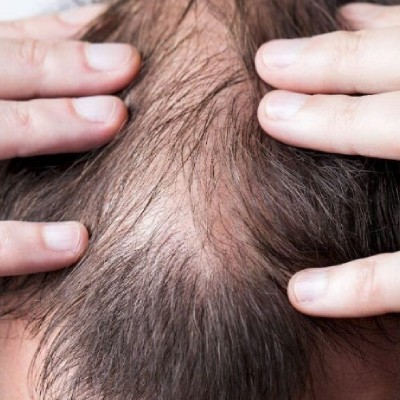


Females who experience hair loss or baldness understandably experience trauma because it affects how they look and appear in public. It is highly frequent when androgenic alopecia is women’s underlying genetic cause of hair loss.
Even among women, discussing the issue of baldness is taboo, and those ladies suffer greatly in silence. Many women continue to endure the pain without receiving the medical care they need to recover from the emotional anguish, embarrassment, and unwelcome stress brought on by hair loss.
A hair transplant in women is the only alternative to shield them from baldness. Women can now have hair transplants procedure to replace their thinning hair and treat baldness.
According to a study, 40% of women experience noticeable hair loss by age 40. Nowadays, many women experience hair loss in addition to men. Women who experience persistent hair loss could become anxious. Consider finding hair fragments on your pillow, the floor, or while washing your hair; You feel powerless. They frequently begin to lose confidence due to significant hair loss. You may be experiencing both a female-specific form of male-pattern baldness and female-pattern hair loss.
Women start looking for various hair loss treatments to combat this. However, a hair transplant for women is an excellent choice if nothing else works and they have bald spots.
The tests used to diagnose hair loss in women might include:
According to specialists, a small fraction of women is eligible for hair transplant surgery. This technique will be advantageous for female hair loss sufferers who:
Women can use the hair transplants procedure for two different reasons:
The FUE or FUT process extracts healthy hair from the donor area and implants it to lower the hairline, giving it a more feminine appearance.
Female or masculine patterns of baldness are both possible in women. Women’s baldness patterns need to be closely monitored. People need to know if they are excellent candidates for hair transplant treatment. Sometimes there are differences between balding in men and women. Women occasionally lack stable donor hair on both the back and sides of the head. Women are as susceptible to scalp-wide hair loss.
Considering everything, not every lady experiencing hair loss will gain from a hair restoration operation. The amount of active balding in those regions and the amount of permanent hair the patient already has on the scalp that they could use in the hair restoration procedure must be considered by the doctor before moving forward with a hair transplant.
Women have several types of hair loss. But what about the finest part? They can be effectively treated using the following various hair treatment techniques.
FUT Hair Restoration
FUT hair implants for women involve removing a strip of skin from the back of the head. It has the most hair per square inch. The hair transplant surgeon will keep an eye on the anesthesia administered to your scalp and search for an elastic area that can be readily concealed by the hair above. That region’s hair is elevated above. Your surgeon will subsequently shave the tiny area from which they will remove the hair strip. He will later sew the wound it made. Under a stereo microscope, the hair transplant surgeon will dissect the hair strip before incisions are made to the recipient area.
FUE Hair Restoration
In a female Follicular Unit Extraction FUE hair transplant procedure, the surgeon will monitor the anesthesia administered to your scalp while hair follicles are removed from the donor area and another area of the scalp. The hair follicles are transplanted into wounds produced in the recipient area after being examined under a stereo microscope. In 10–12 months, you’ll be able to notice the FUE Female hair transplant results.
Balanced Diet
Consuming foods high in protein, such as red meat, fish, eggs, and whole grains, as well as vitamins A, E, C, and B6 (found in spinach, bananas, and other leafy greens), will assist your hair getting nourished, strengthening and preserving your hair strands.
The quantity of grafts the patient needs determines the price of a female hair transplant in India. Female hair transplants typically cost between Rs. 80 and Rs. 150 per graft, which is far less than what they would cost in other nations.
In addition, the cost of a hair transplant for a female varies in India depending on additional criteria like:
Among the top hair transplant clinics of India is Advanced Hair Studio. We have several talented medical professionals capable of performing hair transplants using cutting-edge technology. So doesn’t matter whether you have a mustache, a beard, or less hair on your head. Irrespective of your gender, condition, and preference- We are available to you. In addition to alopecia, our specialists have years of experience treating any hair-related problem you could be having. In addition to hair transplants, we also provide other affordable hair treatment options.
We aim to offer the greatest hair transplantation methods at a reasonable cost so everyone can take advantage of this fantastic chance. We assist people in making decisions for themselves by offering consulting services. We have a qualified crew that looks after customers. We warmly encourage you to stop by our hair clinic for an advanced hair check!













Hair loss problems affect men more than women because of their increased sensitivity to DHT, the hor...

Hair loss problems do not only affect the appearance of a person but also have a mental impact. Whil...

Pilates is a physical fitness system which improves flexibility, posture, core strength, coordinatio...
Subscribe to our email newsletter for helpful tips and valuable resourses
Join forces with Advanced Hair Studio! Explore exciting collaboration opportunities tailored for influencers. Let's redefine haircare together.
Connect now
